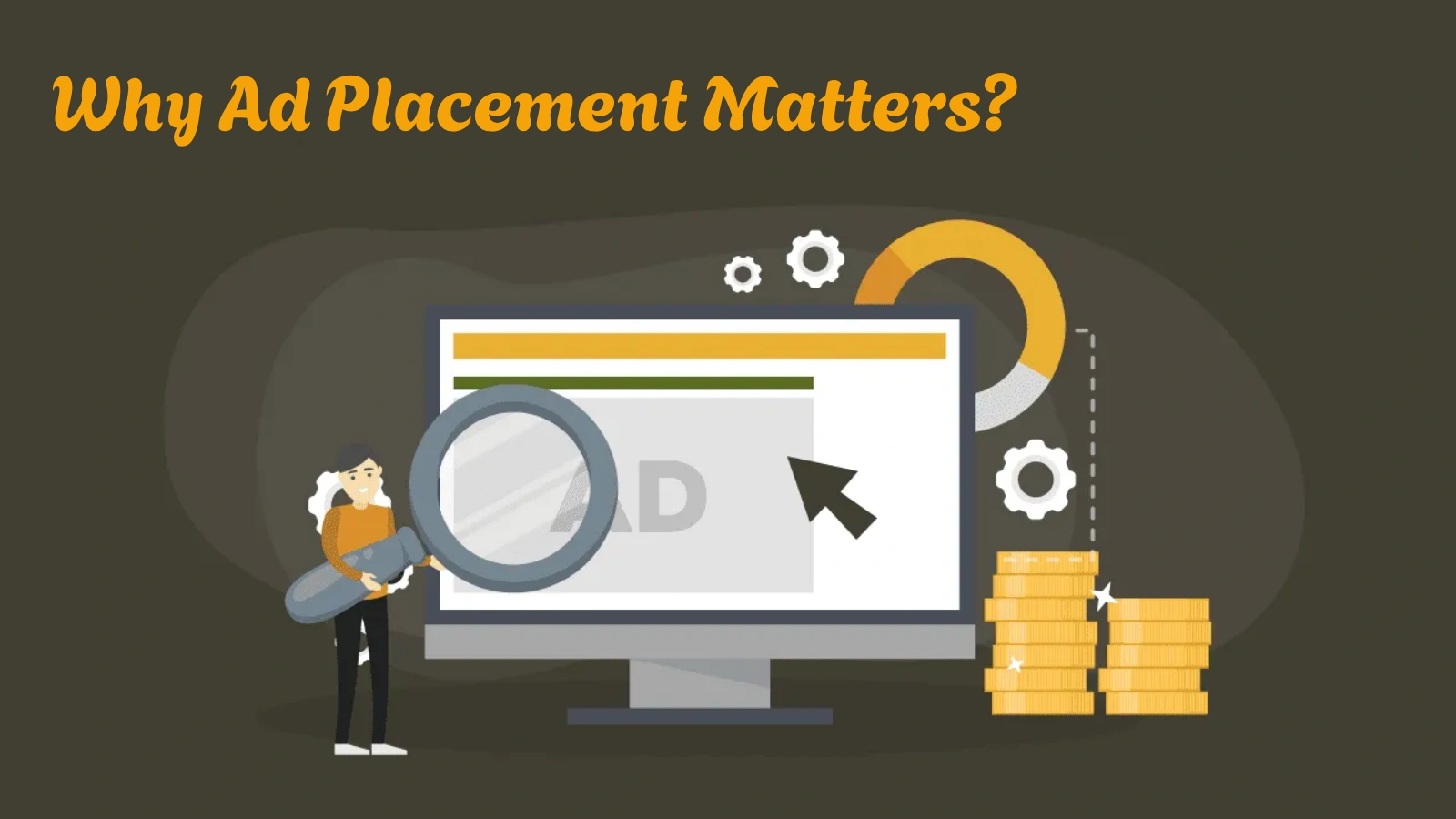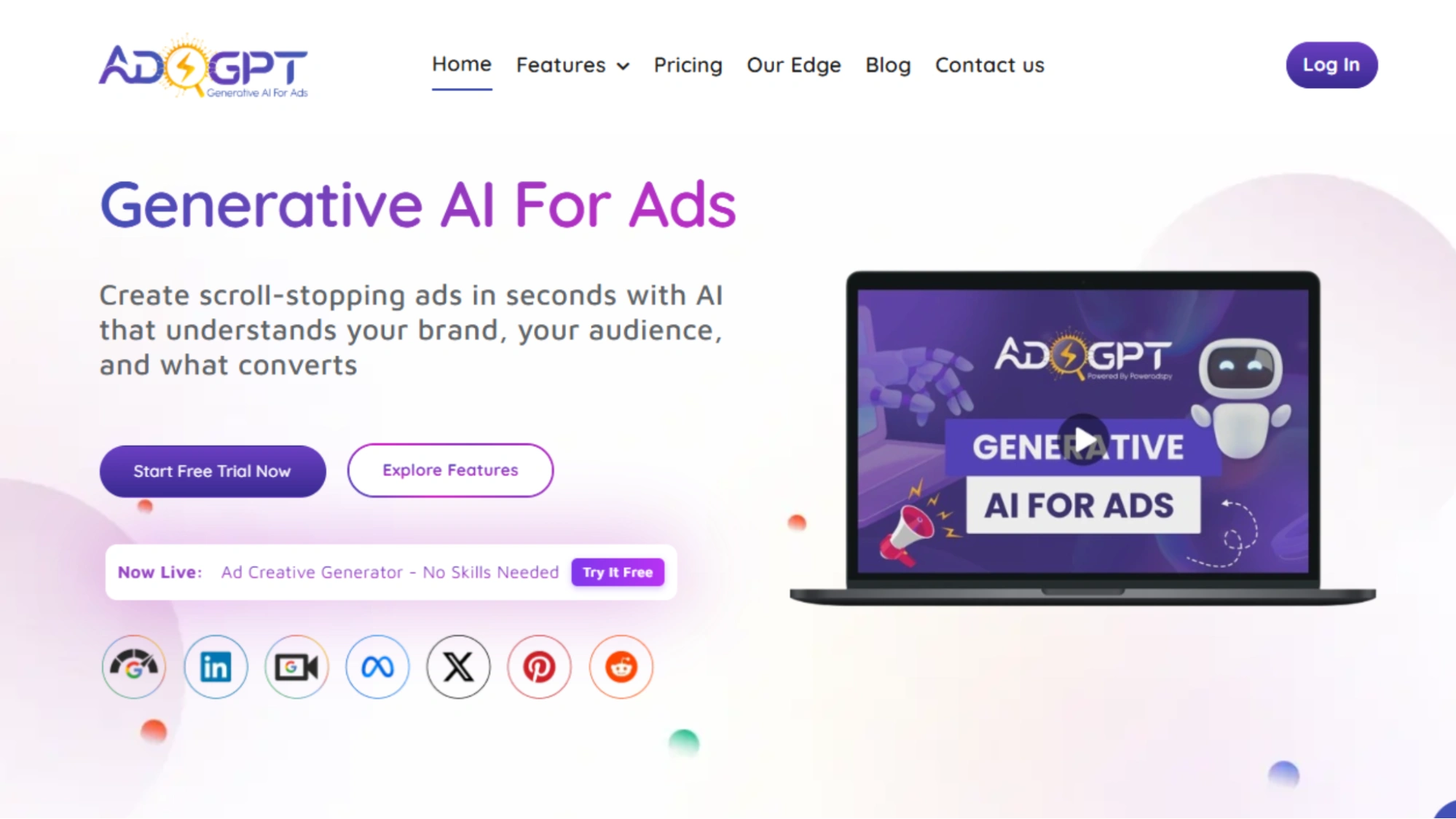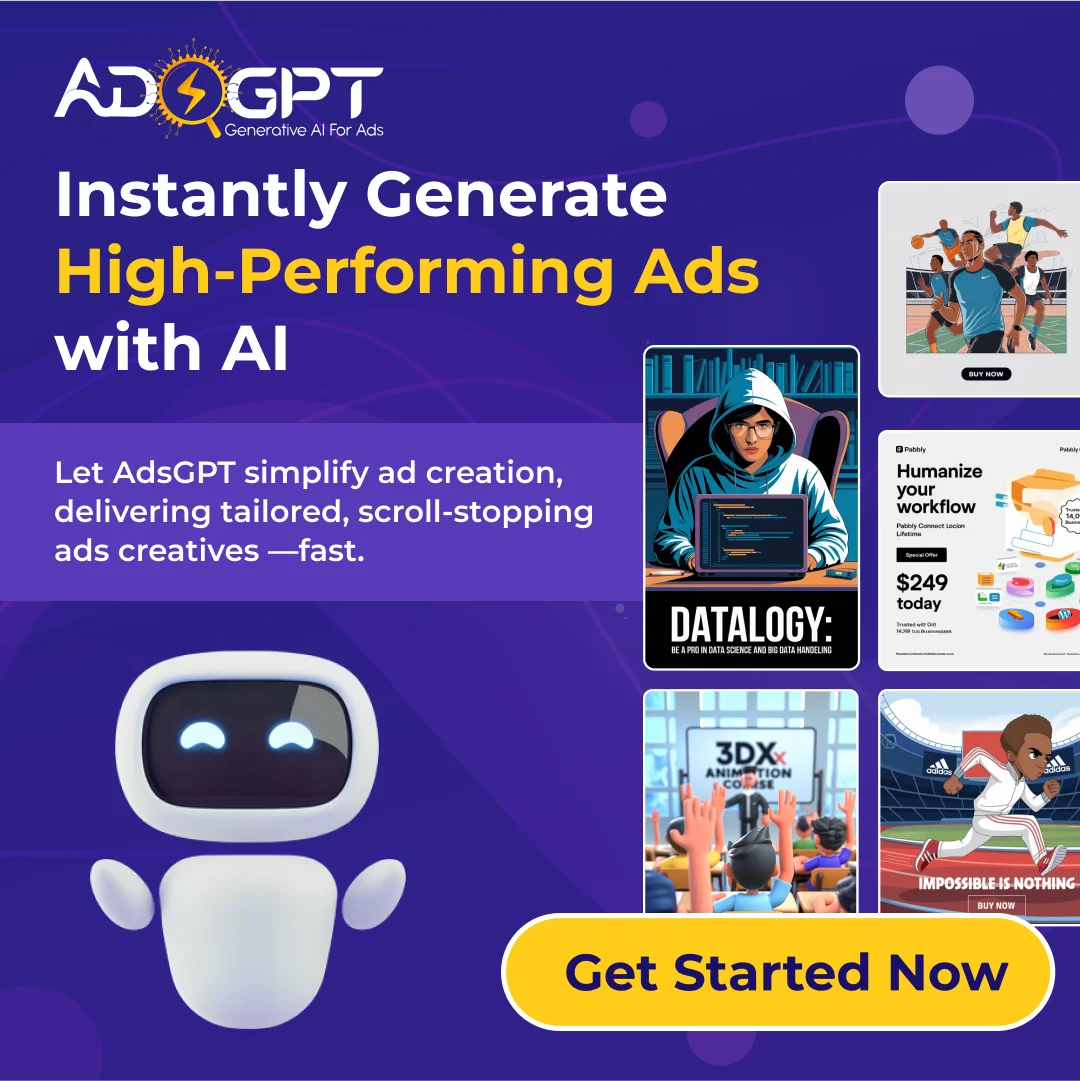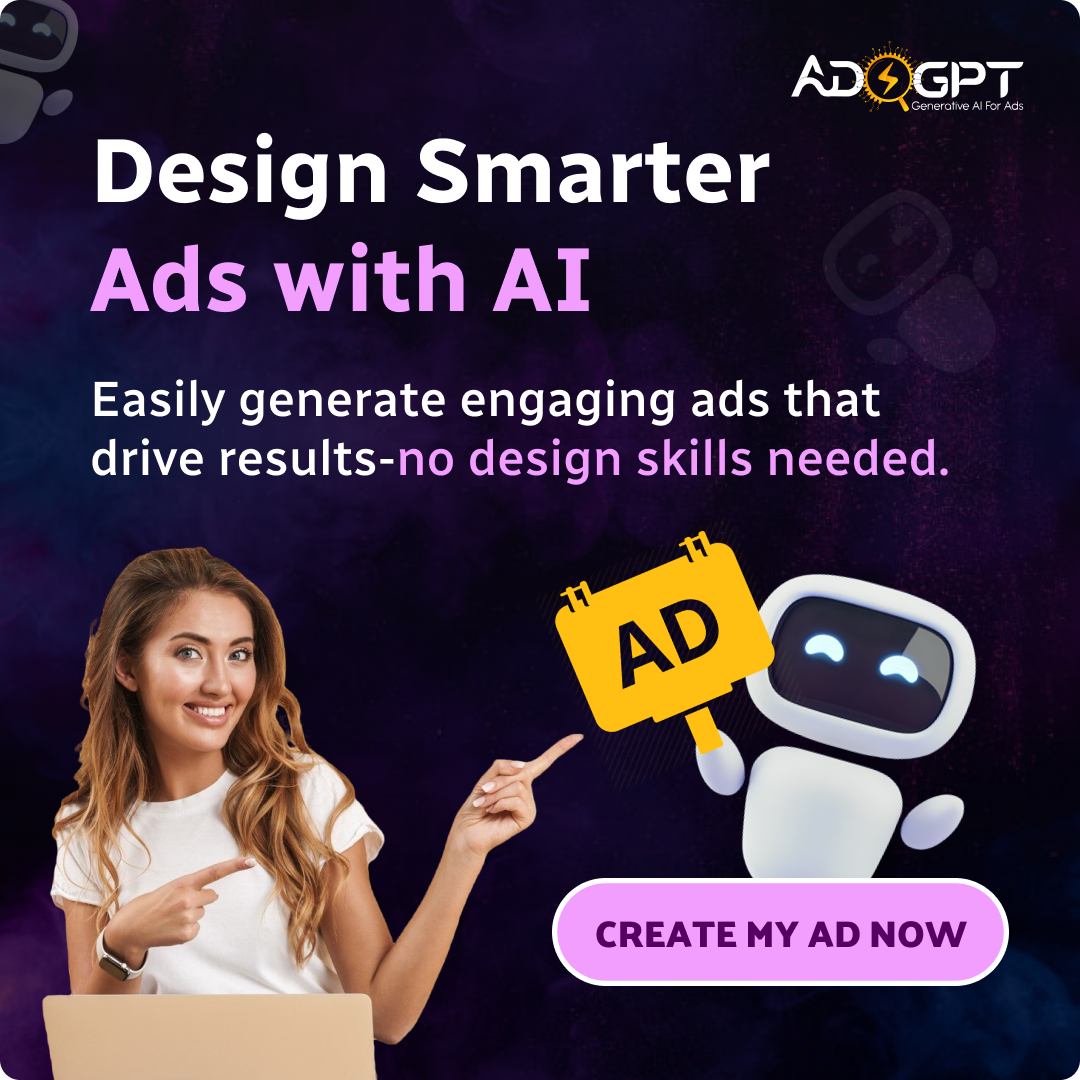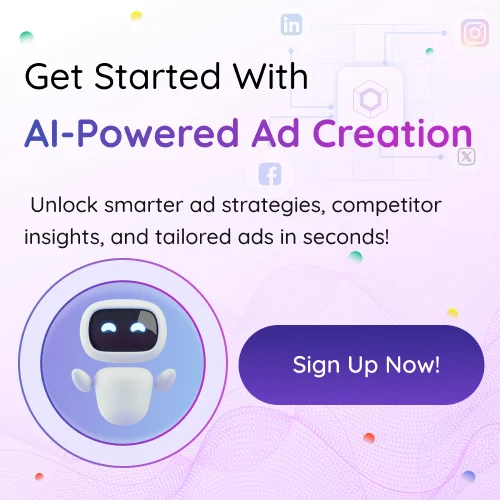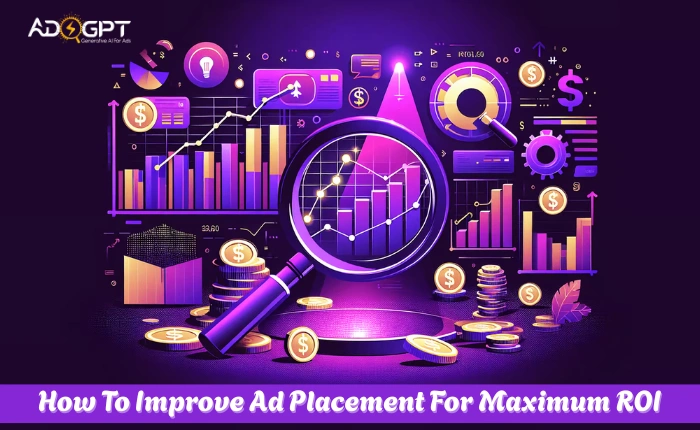
Digital marketing is crowded, and every brand is fighting for attention. The real challenge isn’t just creating ads; it’s making sure they appear in the right place, at the right time, for the right people. That’s where ad placement comes in.
Think of it as the difference between shouting into a busy street and having a one-on-one conversation with someone genuinely interested in what you offer. When done well, it can boost visibility, improve engagement, and convert browsers into buyers.
In this blog, we’ll break down what ad placement really means, how to get it right, and the strategies top marketers use to maximize results.
In a hurry? Listen to the blog instead!
Why Ad Placement Matters?
In digital marketing, an ad is only as effective as where it appears. Even the most creative campaign may fail if it is not strategically positioned in a place where your target audience will notice it.
Ad placement determines the level of visibility, relevance, and interaction an advertisement will receive. A well-placed ad increases brand awareness, while a poorly placed one wastes both budget and resources. With the rise of AI advertising, businesses can now analyze audience behavior more accurately and place ads where they’re most likely to drive engagement.
For example, a lifestyle brand targeting young professionals might achieve more engagement on Instagram stories than in a static banner ad on a news site. Knowing where your audience spends time is key to leveraging advertising placement effectively.
What Are The Fundamentals Of Ad Placement?
Before diving into advanced tactics, it’s essential to grasp the core principles that make advertising truly effective.
Contextual Relevance:
Ads perform better when they appear in a setting that matches the content around them. For example, a sportswear ad on a fitness blog feels natural and captures the audience’s interest instantly.
Audience Targeting:
Placement should align with who you want to reach. This includes demographics (age, gender, income), psychographics (interests, lifestyles), and behaviors (purchase history, browsing patterns).
Device & Platform Optimization:
Users behave differently across devices and platforms. A video ad might engage well on TikTok, while a carousel ad could be more effective on Instagram. Optimizing for mobile vs. desktop also ensures seamless user experiences.
Performance Tracking & Insights:
Measuring impressions, click-through rates, conversions, and engagement helps determine which placements are working. These insights allow marketers to refine strategies and allocate budgets more effectively.
Also Read:
AI Advertising: Everything You Need To Know
How Can You Create Effective Ad Placement Strategies?
Brands often wonder how to identify the perfect spot for their campaigns. The answer lies in combining creativity with data-driven insights. By using well-structured strategies, marketers can maximize reach while minimizing wasted ad spend.
Some approaches include:
- Audience Segmentation – Instead of targeting everyone at once, segment your audience based on age, interests, buying behavior, or lifestyle. This helps ads feel more personal and increases the chance of connecting with the right people.
- Behavioral Targeting – By tracking browsing patterns, search history, and purchase behavior, marketers can predict where ads will make the most impact. For instance, showing travel deals to users who recently searched for flights delivers higher engagement.
- Channel-Specific Placement –Each platform has unique strengths. Instagram Stories work well for visual storytelling, LinkedIn suits professional campaigns, and YouTube captures attention through video ads. Looking at ad placement examples across these platforms helps brands understand what works best for their industry.
- Testing and Experimentation – Not every placement performs the same, even with the same ad. A/B testing across different platforms and formats helps identify what resonates best with your audience, leading to a stronger ROI.
Digital Vs Traditional Ad Placement
The rise of digital marketing has dramatically changed how businesses think about advertising. Traditional placements such as billboards, print, or TV are now complemented, and often overshadowed, by digital platforms.
Traditional Placement:
- Offers a broad reach but less precise targeting.
- Works well for brand awareness but may not directly lead to conversions.
Digital Placement:
- Allows micro-targeting based on interests, behaviors, and demographics.
- Provides measurable performance data, enabling better optimization.
- Flexible in terms of format: videos, banners, carousels, and native ads.
Modern campaigns often blend both approaches to balance reach and precision.
The Role Of Meta Ad Placement
Platforms like Facebook and Instagram rely heavily on algorithm-driven advertising. Here, meta ad placement plays a vital role by automatically positioning ads in areas where they are most likely to perform well.
Meta’s system distributes ads across feeds, stories, search results, and the audience network, ensuring maximum exposure. Businesses that allow automatic placement often see better cost efficiency, though manual adjustments can be made for more control.
What Is The Science Behind Ad Placement Optimization?
To maximize effectiveness, marketers must go beyond guesswork and focus on ad placement optimization. This involves continuous monitoring and refinement based on performance metrics.
Key practices include:
- A/B Testing – Comparing two different placements to see which yields higher engagement.
- Heatmaps & Analytics – Tracking where users spend most of their time on a page or platform.
- Cost Analysis – Balancing between placements that offer visibility and those that provide conversions at the lowest cost.
- Dynamic Adjustments – Shifting ad budgets toward placements that consistently outperform others.
Marketers today rely on advanced tools to refine and test their ad placement strategies. AI-driven platforms like AdsGPT make this process smoother by generating ready-to-use ad copy tailored for different platforms. With instant copy generation and inspiration from competitor ads, such tools help brands align messaging with the right placement for maximum performance.
By adopting a scientific approach, businesses can ensure every dollar invested generates meaningful returns.
How AdsGPT Supports Smarter Ad Placement?
When it comes to crafting impactful ads, creativity and placement go hand in hand. That’s where AdsGPT comes in, a generative AI platform designed specifically for advertisers. It doesn’t just help with writing copy; it makes sure your ads are optimized for every platform, giving your placement strategy a stronger foundation.
Key Features Of AdsGPT:
- Generative AI for Ads – AdsGPT allows you to create scroll-stopping content in seconds. It understands your brand voice, your audience, and what truly drives conversions.
- Instant Ad Copy Generation – Whether for Google, Meta, LinkedIn, or Twitter, AdsGPT delivers ad copy optimized for each platform. This saves time while ensuring consistent quality across campaigns.
- AI-Powered Creativity – Say goodbye to writer’s block and guesswork. AdsGPT crafts engaging, high-performing ads by leveraging industry best practices and AI intelligence.
- Competitor Ads Inspiration – AdsGPT lets you analyze competitor ads, pick the ones that inspire you, and generate a customized version within seconds. This gives you a competitive edge without copying.
- Platform-Specific Optimization – Each platform has unique requirements for tone, format, and messaging. AdsGPT fine-tunes your ad copy so it performs its best wherever it’s placed.
- Track & Refine – With an organized history of your generated copies, AdsGPT makes it easy to revisit past campaigns. This helps refine strategies and spark fresh ideas for future ads.
By integrating AdsGPT into your workflow, you can focus on where your ads appear while the platform takes care of what they say, a perfect synergy for smarter ad placement.
What Are The Most Common Mistakes In Ad Placement?
Even seasoned marketers can slip up when planning ad placements for a product advertisements campaign.
Key missteps to be aware of are:
Overlooking Audience Behavior:
Ads placed on the wrong platforms fail to reach the intended audience. For example, targeting Gen Z primarily on LinkedIn may waste budget since they’re more active on TikTok and Instagram.
Ignoring Mobile Optimization:
With most users browsing on smartphones, ads that aren’t mobile-friendly risk poor visibility and low engagement. Responsive design and mobile-first formats are now essential.
Neglecting Frequency Capping:
Showing the same ad too many times causes ad fatigue, leading to annoyance instead of conversions. Using frequency caps helps maintain interest without overwhelming users
Failing to Test New Platforms:
Sticking only to familiar channels limits growth. Exploring placements on emerging platforms like Pinterest or podcast ads can uncover new audiences and higher ROI.
Avoiding these mistakes helps transform ad placement into a true driver of growth rather than a drain on your marketing budget.
Also Read:
Product Advertisements: How to Master Impactful Campaigns?
What Are The Future Trends In Ad Placement?
As technology advances, the way ads are placed is rapidly evolving. Businesses that stay ahead of these shifts can create more impactful and competitive campaigns.
Artificial Intelligence (AI):
AI-powered tools are reshaping how ads are placed by predicting user behavior and suggesting high-performing slots automatically.
Augmented Reality (AR):
AR ads embedded within mobile apps and experiences are gaining popularity, offering more immersive experiences.
Voice-Activated Devices:
With the rise of smart speakers, advertising through audio searches and voice responses is becoming a new frontier.
Privacy and Data Laws:
Stricter data protection regulations are changing how ad targeting works, making transparent and compliant placements more important.
These emerging trends emphasize the need for continuous learning and adaptation.
Conclusion
Effective ad placement is not about being everywhere, it’s about being in the right place at the right time. When businesses focus on smart strategies, relevant contexts, and continuous optimization, they unlock the true potential of digital advertising.
From understanding audience behavior to adopting automation tools, every decision matters. Using AI-driven solutions like AdsGPT can make this process even easier by generating platform-ready ad copy that complements your placement strategy. Whether you are exploring new platforms, testing formats, or embracing advanced targeting, thoughtful ad placement ensures your brand message stands out in a crowded digital space.
For marketers ready to elevate their campaigns, mastering the art and science of advertising is the key to long-term success.
FAQS
1. How often should I review and adjust my ad placements?
Ad placements should ideally be reviewed every 2–4 weeks, depending on campaign duration and budget. Frequent performance reviews help identify underperforming channels early and allow for timely budget reallocation.
2. What’s the best way to determine which platform gives me the highest ROI?
Use multi-channel attribution models and conversion tracking to analyze which platforms contribute most to conversions. Tools like Google Analytics, Meta Ads Manager, and AdsGPT insights can reveal where your audience engages the most.
3. Are automated ad placements better than manual ones?
Automated placements, powered by AI, often deliver better efficiency and reach. However, manual placements are beneficial for niche targeting or when you want full control over where your ads appear. The best results usually come from a hybrid approach combining both.

